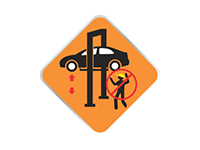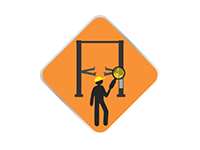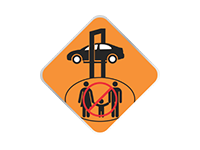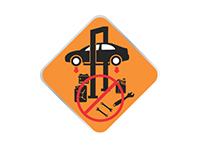Two Post Hydraulic Lifts
In the automotive world, change is constant. As cars evolved throughout the past century, the world around automobiles changed as well.
Before car lifts, mechanics tried their best to squeeze underneath cars to perform routine work. With little room and terrible visibility, mechanics required a new approach for car repairs.
But as cars became more popular, the need for car repairs followed. To improve access to the underside of cars, garages excavated pits, placing short ramps on top. Once the vehicles were on the ramps, mechanics could climb into the pits to complete work. While this alternative demonstrated the advantages of increased mobility for mechanics, but these pits presented their share of issues. To begin with, although pits provided more manoeuvrability than simply crawling under the car, the lack of lighting still made visibility an issue. Moreover, excavation and appropriate accommodations were expensive, which meant that many garages could not afford to use this technique.
It wasn’t until 1925 that the first hydraulic car lift was patented. A two post hydraulic lift works on following principle that putting pressure on a non-compressible fluid in a cylinder will exert equal force to all sides of the container. A Hydraulic Two post lift consists of two upright columns with four adjustable arms attached to a carriage assembly and two hydraulic cylinders. The power unit delivers hydraulic fluid to the cylinders. Cables installed between the carriages ensure the arms move together and are synchronised. The hydraulic fluid pushes the piston up that causes the platform to rise. To move downwards, the valve opens and the fluid is allowed to flow back into the reservoir and is pushed back using the gravitational force of the lift.
Types of Hydraulic Lift & Applications
- Two Post Hydraulic lift – Clear Floor – Base Free design makes working beneath the vehicle easy
- Two Post Hydraulic lift – With base – it’s suitable for low ceiling height at workshop
Advantages
- Low maintenance
- No of components is very less
- Very low annual maintenance cost
- Base Free design makes working beneath the vehicle easy
Benefits of Using a Hydraulic Lift
- The sturdy and durable design of hydraulic lift has made them popular in auto workshops.
- They are economical and have low maintenance. They can be easily installed and operated.
- They are reliable and produce impeccable results that lead to high productivity rates.
How to operate a Two Post Lift?
- Park the vehicle between two posts
- Lift until wheels are off the ground
- Raise the lift to desired working height
- Next release the lock from both side columns
- Always ensure that the lift is in lock position
- Push the button on the power unit raising the arms until the adaptors make contact
- The extension can be used to help reach lifting points and to help level the vehicle
- Use appropriate adaptors for lifting the vehicle
- Finally, remove the arms from vehicle loading points
- Ensure that the vehicle is level & stable on the lift
- Lower the vehicle, first raise it off the lift’s locks
- Position adaptors at the manufacturer’s recommended lifting points
- Ensure the vehicle’s individual axle weight must not exceed half of the lift’s capacity
- Push the manual lever on the power unit until the vehicle is safely down the ground level.
Lifting Operations – Do’s & Don’ts

Remain clear of the lift when raising or lowering the vehicle

Use the vehicle manufacturer’s recommended lifting points

Proper maintenance and inspection in necessary for safe operation

Never raise the vehicle with anyone inside it. Customers or bystanders should not be in the lift area during the operation

Positioning of the vehicle and operation of the lift should be done only by trained and authorized personnel

Inspect your lift daily and make any repairs with original equipment (OE) parts

Before lowering the lift, be sure materials are removed from under the vehicle
